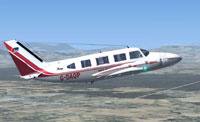
Piper PA-28 -140 1966 Cherokee
Recent private plane
accidents are rather “ho hum”. Yes, more of the same and boring. For example
let me list some of the recent accidents. There were five “went off” the runway
landings. Several with add ons like: into the mud, struck runway lights and/or
struck prop. Two “force landed” in a field, one on a golf course. Two “nosed
over” on landing and another flipped over. That was just in three days. Having landed safely
many hundreds of times in all sorts of planes, I just can’t imagine doing all
this nonsense.
I read an interesting
article: ”Why Private Planes are Nearly as Deadly as Cars” in Life Science
dated February 5, 2015. Here some of the main points:
1. Accident rates essentially unchanged over past decade.
2. 2010 NTSB report : 1 death every 100,000 flight hours.
While accident and
fatalities
are down in corporate and business jet flights, Accident rate in personal
flights increased by 20% in past decade and fatality rates are up by 25%.
3. Comparing auto and plane deaths, it is 19 times more
dangerous stepping into a private plane.
4. Why do general aviation planes crash?
a. The number 1 reason is Loss of Control.
b. Number 2 reason is flight into IFR conditions by those
untrained in instrument flight. This frequently results in fatalities.
5. A reason why so many accidents is suggested by the
author: recurrent training is required only every two years for private ticket
holders. Long time for those who don’t fly often. (When I was flying
commercially, I had a check ride every six months).
6. According to the AOPA: twice a week a plane crashes
because of running out of gas. That I consider is too dumb to discuss. I came
close to it once early in my flight career. So I speak from experience.
But no one is perfect. Please read below about an early misadventure of mine.
I might as well fess up to
that flight alluded to above. It occurred
in the mid to late sixties when I was in my second year of medical
school. Three of my fellow students and yours truly had friends in Boston and wanted
to visit them over a late fall weekend. So I made arrangements to rent a Piper
140, that was marginally IFR equipped, as was I the pilot, at the time. We
headed east early on Saturday in good VFR. Strong westerly’s were blowing. Nice
for part of the trip anyway. As we passed Albany, having taken off from
Syracuse, we were slightly less than halfway there. So far so good. Great
ground speed, but not so weather wise.
Clouds started forming, but we were still
VFR. As we approached Worcester, the picture got a bit scary. The weather there
included some isolated snow showers with some reduction in visibility. I called
flight service to get the latest Boston weather. Ouch! it was marginal VFR
with snow and forecast to get worse, which it did. As I didn’t feel I had the
skills to handle serious IFR weather, I decided we better head back west and
look for a place to land an reevaluate things. But I hadn’t considered the
strong westerly’s, now our enemy as a headwind. Checking the fuel gauges we had
about half tanks or slightly better. But with the strong headwinds our ground
speed really dropped. Calculating things, I was worried that our fuel supply
would be inadequate. I was hoping to land back along our return route but couldn’t.
It all was turning IFR. I made the decision to push on, leaning the engine as
much as possible to minimize fuel burn. Long story short. We landed back at
Syracuse with little better than fumes in the tanks. That was something I vowed
never to repeat. A poor piloting job was offset by help from the good fairy,
something you can't count on. After that it never did happen again.
So fellow pilots. Never
plan a trip so that your fuel reserves will be challenged . The good fairy may
not be around.
 Another Holiday has successfully come and gone,
our tree is still up. Looking forward to a pleasant and relatively quiet New
Year. I have been doing some reflecting on things, appropriate to the year's
end, and decided that this would be my last Operationsafeflight blog for a
while. I have been writing articles since February 2009, and covered just about
all areas that have concerned me.
Another Holiday has successfully come and gone,
our tree is still up. Looking forward to a pleasant and relatively quiet New
Year. I have been doing some reflecting on things, appropriate to the year's
end, and decided that this would be my last Operationsafeflight blog for a
while. I have been writing articles since February 2009, and covered just about
all areas that have concerned me.

